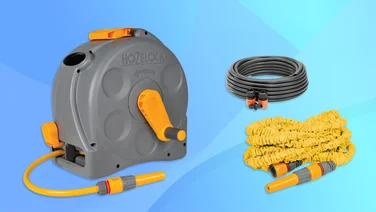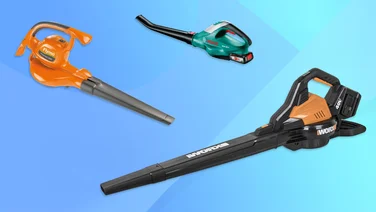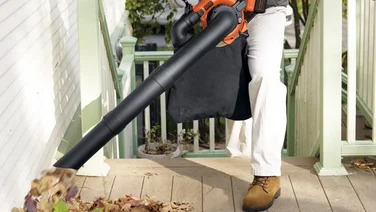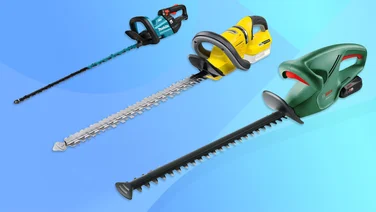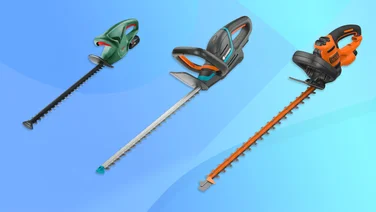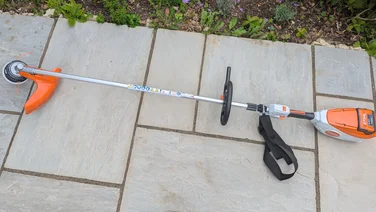To help us provide you with free impartial advice, we may earn a commission if you buy through links on our site. Learn more

Grass trimmers – or strimmers, if you prefer Black & Decker’s trademark name – are one of the handiest garden tools going, easily as essential as a lawn mower. Don your trusty safety gear, hold the spinning bit well away from your feet, and pull the trigger on those pesky outsized tufts. If, however, you’re wondering why you’re not getting the cleanly trimmed results you crave, or whether you need to take any safety precautions (hint: you do), then we’re here to help.
To get the best grass trimming advice, we’ve spoken to two seasoned garden experts, Paul Hicks, Product and Marketing Manager at STIHL GB, and one of our local gardening gurus, Sophie Careless of Sophie’s Gardening. They’ve shared their no-nonsense tips for staying safe, getting clean edges, tackling tough weeds and avoiding common mistakes.
Whether you’ve just bought your first grass trimmer or dusted one off from the back of the shed, this guide will help you get to grips with it safely, efficiently and confidently – and hopefully with as few expletives as possible.
Always take sensible safety precautions
With great strimming power comes great responsibility – and that includes the need to wear sensible clothes and take safety precautions. Before you’ve started trimming, Paul’s advice is that preparation is key, “When you’re using a grass trimmer, your first step should always be to clear the area of stones, sticks and other debris that could be thrown up by the cutting line, to avoid causing injury to yourself or damaging the tool.”
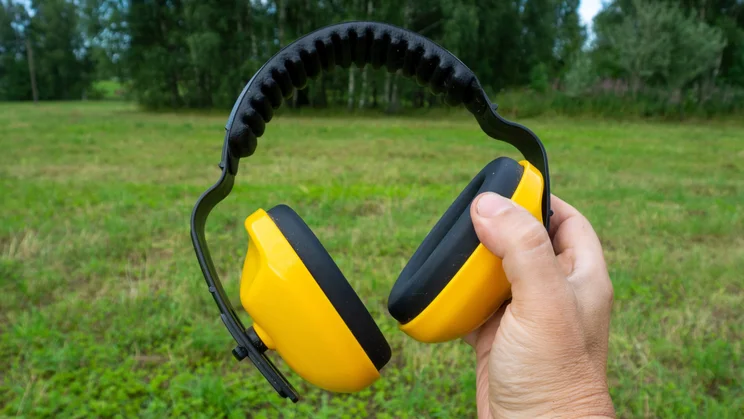
This doesn’t mean you should skip the safety gear, though. For Sophie, it’s non-negotiable: “No matter how carefully you rake and sweep before you get the trimmer out, you’ll never remove every stick, stone and pebble. Even if you’re working in hot weather, it’s far better to wear appropriate clothing and safety equipment while you’re strimming.” Paul agrees, “Wearing proper safety gear is essential – even if you think you have thoroughly cleared the area, any remaining debris could cause serious injury if thrown up by the grass trimmer.”
And if you’re looking at your cheap, low-powered plastic trimmer and wondering whether these rules apply, they do. Even low-powered strimmers are capable of turning plant matter and pebbles into high velocity projectiles.
Our experts’ key advice
- Wear safety goggles (and potentially a visor, too): Glasses wearers might feel safe enough, but while your prescription lenses might fend off the occasional twig, they’ll shatter if stones or pebbles get involved. Your eyesight is worth the price of some basic safety goggles – and a safety visor over the top wouldn’t go amiss if you’re dealing with a more powerful trimmer.
- Wear trousers and a long-sleeve top: Grass trimmers can trim more than just plant matter. If they can cut through grass and thick undergrowth, then they’ll happily slice skin. And trust us, high velocity sticks and stones really sting. Wear sturdy shoes, trousers, gloves and a long sleeve top.
- Do you need ear protection? Many strimmers may not appear to be dangerously loud, but whether yours is a powerful petrol-powered model or a whiny electric model, you should consider wearing ear protection. If you’re exposed for long periods, then hearing damage can set in even at lower volume levels.
- Wait for dry weather: Just like mowing, trimming is best done in drier conditions. And especially so if you’re using an electric trimmer. Paul’s advice is to be extra cautious if you really do have to work in wet conditions. “Wet grass will stick to the mowing line and can affect performance, so it’s best to wait until your lawn has dried out before trimming it.”
What’s the best way to use a grass trimmer?
- Take it slow and steady
- Use smooth left to right or right to left sweeps
- Don’t rush; work in stages
- Try alternating the cutting direction
Once you’re set up and ready to start trimming, it’s a simple case of taking it slow and steady. Frantically waving your trimmer around isn’t just dangerous – it’ll also potentially scar your lawn, according to Paul.
“When using a grass trimmer, aim to keep the mowing head parallel to the ground and work in smooth, semi-circular motions from right to left, moving forwards slowly to avoid scalping the turf or creating uneven cuts.
“For tall grass or weeds, I’d recommend taking the two-step approach; first swing from left to right with your grass trimmer at a higher level to cut the top of the grass or weeds, then bring it back the opposite way closer to the ground to finish the cut.”
Whatever you do, don’t rush. Sophie advises that you let the trimmer set the pace, “All trimmers have different amounts of cutting power. If you rush the job, they’ll hack and slash at the grass and leave a horrible finish. Take your time, move the trimmer head steadily to and fro and slow down for thicker growth. It’s better to cut multiple times rather than risk clogging the cutting head. With a little patience, the results will be worth it.”
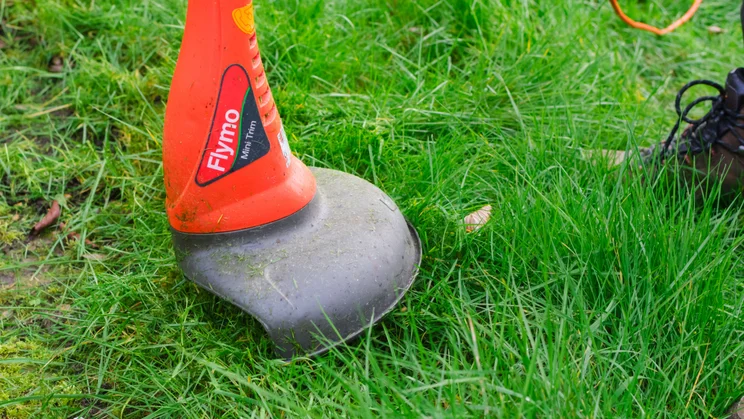
Depending on your trimmer, you may be able to rotate the cutting head around for edging duties. Obviously, you can just rotate any trimmer around to do a similar job, but the handle won’t be designed for being held comfortably at this angle, so you may struggle to get a clean cut. For the neatest results, a manual pair of edging shears are invaluable.
One thing to consider if you’re using a more high-powered trimmer – such as one you’ve rented for a garden clearance – is that not all trimmers spin the same direction. Sophie’s advice is simple, “If you’re finding that a lot of grass and debris is coming towards you, then try reversing your cutting direction. For instance, if you’ve using a trimmer which spins clockwise, try sweeping from right to left. If your strimmer spins counterclockwise, then try left to right. There’s no hard and fast rule, though – just pick a direction that works for your trimmer.”
If you hate the back-breaking thought of raking up all the trimmed grass, then Sophie has one final time-saving tip, “If you allow the trimmer to scatter the cuttings all over the borders, you’ll have a horrible job ahead of you. Instead, change cutting direction so that the trimmer is always firing the cut grass back onto the lawn. That’ll save you the hassle of cleaning it up as the mower will pick it up when you cut the lawn.”
Is your strimmer cut out for the job?
- Cordless models: Have spare batteries charged and ready
- Corded models: Use an RCD; unwind your extension cable
- Petrol models: Consider a brushcutting head for tougher jobs
- All models: Soak your line a day beforehand to minimise breakage
Strimmers come in different shapes and sizes, and can provide radically different amounts of cutting power. Trying to tackle a huge, overgrown garden with a small, low-powered corded model is going to be an exercise in frustration – and equally, a huge petrol powered strimmer will be overkill for smaller jobs, and unwieldy, too.
Whichever type of trimmer you have, there is one method to minimise constant line breakages. Paul’s top tip, “Before using your grass trimmer, it’s also worth soaking your mowing line in water for 24 hours. This makes it more flexible and less prone to breakage, so it will last longer.”
Cordless trimmers

For light trimming of weeds around your garden’s edges, a basic lightweight cordless trimmer will do just fine. If you find your strimmer struggling, however, or find it chewing through line without making much headway, then it may be time to rethink your strategy. If you’ve already tried Paul’s tip of soaking your line to keep it supple and durable, then your best bet is to follow Sophie’s patient approach: work in stages, and take it slow.
Whether you’re following that advice or not, I’d always recommend having a couple of fully charged batteries to hand. Even smaller jobs can take longer than you expect, and a battery that lasts 20 minutes tackling shorter grass may only last half that if you’re tackling thicker growth. There’s nothing more frustrating than having to stop a job half way through and wait several hours for a battery to charge.
Mains/Corded trimmers

In the unlikely scenario that you’ve not bought your trimmer yet, then make sure to check how long the cable is before buying – or you’ll also need to shell out on an extension cable. Most trimmers have cables over 10 metres long, but bear in mind that you’ll want enough slack to reach the end of your garden with some slack in the cable rather than risk strangling your prize hydrangeas.
Also, always use a RCD (Residual Current Device)-equipped plug or extension cable. In the event that you trim your mains cable, it’ll cut the power and potentially save your life.
If you’re using an extension cable, make sure to check its wound and unwound maximum wattage rating – this is normally stated clearly on the product. Very few (if any) trimmers will have a high enough wattage to cause problems, but left on the spool, the cable will handle a much lower wattage before overheating and, if you push it beyond those rated wattages, the cable can potentially melt. If in doubt, it’s always safer to fully unwind it before use.
Petrol trimmers
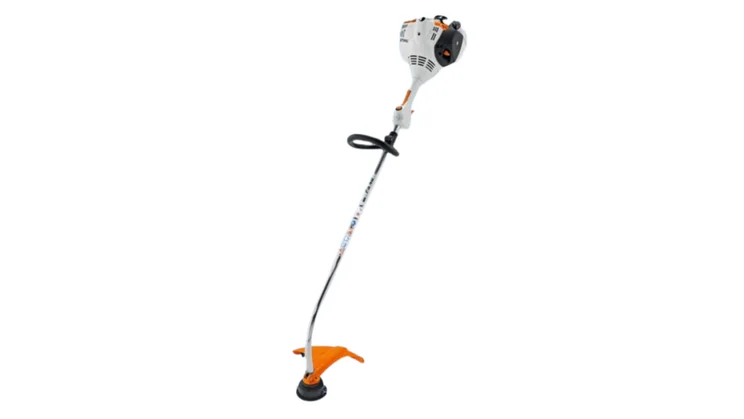
As long as you have a good supply of fuel – and some proper safety gear to hand – then a petrol trimmer will slice through most trimming jobs with ease.
If you’ve already tried Paul’s top tip of soaking your line overnight (again: just the line, not the trimmer, too), and you’re still suffering from regular breakages, then one option may be to upgrade to a thicker line. While basic models use ~2mm thick line, some models will accept thicker line to provide greater cutting power. Consult the manual or manufacturer’s website – or contact them directly – and see if there’s the option to upgrade to a thicker line for tougher jobs.
However, if you’re tackling some really dense growth, replete with thick branches, then even the thickest trimming line may not be up to the job. If it’s a one off garden clearance, and your petrol trimmer supports it, then you may be able to buy a specialised brush cutting head. These swap the trimming line for solid blades.
Brush cutting heads provide vastly more cutting power, but are much more dangerous, so a full complement of safety gear is a must. You may even want to invest in some steel-toed shoes or boots, too, just to be on the safe side.

